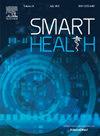Breath as a biomarker: A survey of contact and contactless applications and approaches in respiratory monitoring
Q2 Health Professions
引用次数: 0
Abstract
Breath analysis has emerged as a critical tool in health monitoring, offering insights into respiratory function, disease detection, and continuous health assessment. While traditional contact-based methods are reliable, they often pose challenges in comfort and practicality, particularly for long-term monitoring. This survey comprehensively examines contact-based and contactless approaches, emphasizing recent advances in machine learning and deep learning techniques applied to breath analysis. Contactless methods, including Wi-Fi Channel State Information and acoustic sensing, are analyzed for their ability to provide accurate, noninvasive respiratory monitoring.
We explore a broad range of applications, from single-user respiratory rate detection to multi-user scenarios, user identification, and respiratory disease detection. Furthermore, this survey details essential data preprocessing, feature extraction, and classification techniques, offering comparative insights into machine learning/deep learning models suited to each approach. Key challenges like dataset scarcity, multi-user interference, and data privacy are also discussed, along with emerging trends like Explainable AI, federated learning, transfer learning, and hybrid modeling. By synthesizing current methodologies and identifying open research directions, this survey offers a comprehensive framework to guide future innovations in breath analysis, bridging advanced technological capabilities with practical healthcare applications.
呼吸作为一种生物标志物:在呼吸监测中的接触和非接触应用和方法的调查
呼吸分析已成为健康监测的关键工具,提供了对呼吸功能,疾病检测和持续健康评估的见解。虽然传统的基于接触的方法是可靠的,但它们往往在舒适性和实用性方面存在挑战,特别是对于长期监测。这项调查全面考察了基于接触和非接触的方法,强调了机器学习和深度学习技术应用于呼吸分析的最新进展。非接触式方法,包括Wi-Fi通道状态信息和声学传感,分析了它们提供准确、无创呼吸监测的能力。我们探索了广泛的应用,从单用户呼吸频率检测到多用户场景,用户识别和呼吸疾病检测。此外,本调查详细介绍了基本的数据预处理、特征提取和分类技术,提供了适合每种方法的机器学习/深度学习模型的比较见解。会议还讨论了数据集稀缺性、多用户干扰和数据隐私等关键挑战,以及可解释人工智能、联邦学习、迁移学习和混合建模等新兴趋势。通过综合当前的方法和确定开放的研究方向,本调查提供了一个全面的框架来指导呼吸分析的未来创新,将先进的技术能力与实际的医疗保健应用相结合。
本文章由计算机程序翻译,如有差异,请以英文原文为准。
求助全文
约1分钟内获得全文
求助全文

 求助内容:
求助内容: 应助结果提醒方式:
应助结果提醒方式:


